The spring-fed wetland of Dixie Meadows is home to the Dixie Valley toad, a unique species found nowhere else in the world. (Patrick Donnelly / Center for Biological Diversity)
November 7, 2022
By Jessica McKenzie
Dixie Meadows is a smudge of vibrant green in an otherwise muted pink and tan landscape. To travel there from Fallon, Nevada, the nearest city, one must first drive 40 miles east on US Route 50, a stretch of highway known as the “loneliest road in America,” and then another 40 miles north on a gravel road into Dixie Valley, a low-lying plain between the Stillwater Range and the Clan Alpine Mountains. Desert shrubs extend as far as the eye can see, until a shimmer of water appears on the horizon—the first sign of a desert oasis. Fed by a series of over 100 seeps and springs, these 760 lush acres at the foot of the Stillwater mountains encompass the entire global range of the endangered Dixie Valley toad. They are also a “surface expression,” as geologists put it, of an as-yet untapped geothermal energy source.
Wearing a straw cowboy hat and using a wooden staff as a walking stick, Patrick Donnelly leads the way into Dixie Meadows’ shoulder-high reeds, where we hope to find the smallest of the western toads. As the Great Basin director of the Center for Biological Diversity, Donnelly campaigned to get the Dixie Valley toad listed as endangered, which the Fish and Wildlife Service did in April on an emergency basis for only the second time in the past 20 years. Donnelly has also worked tirelessly to halt the progress of the largest threat to the Dixie Valley toad and the green oasis it calls home: the Dixie Meadows Geothermal Project. Donnelly is concerned that if the geothermal project proceeds as planned, it will disturb or even dry up the series of hot springs that have created this verdant oasis.
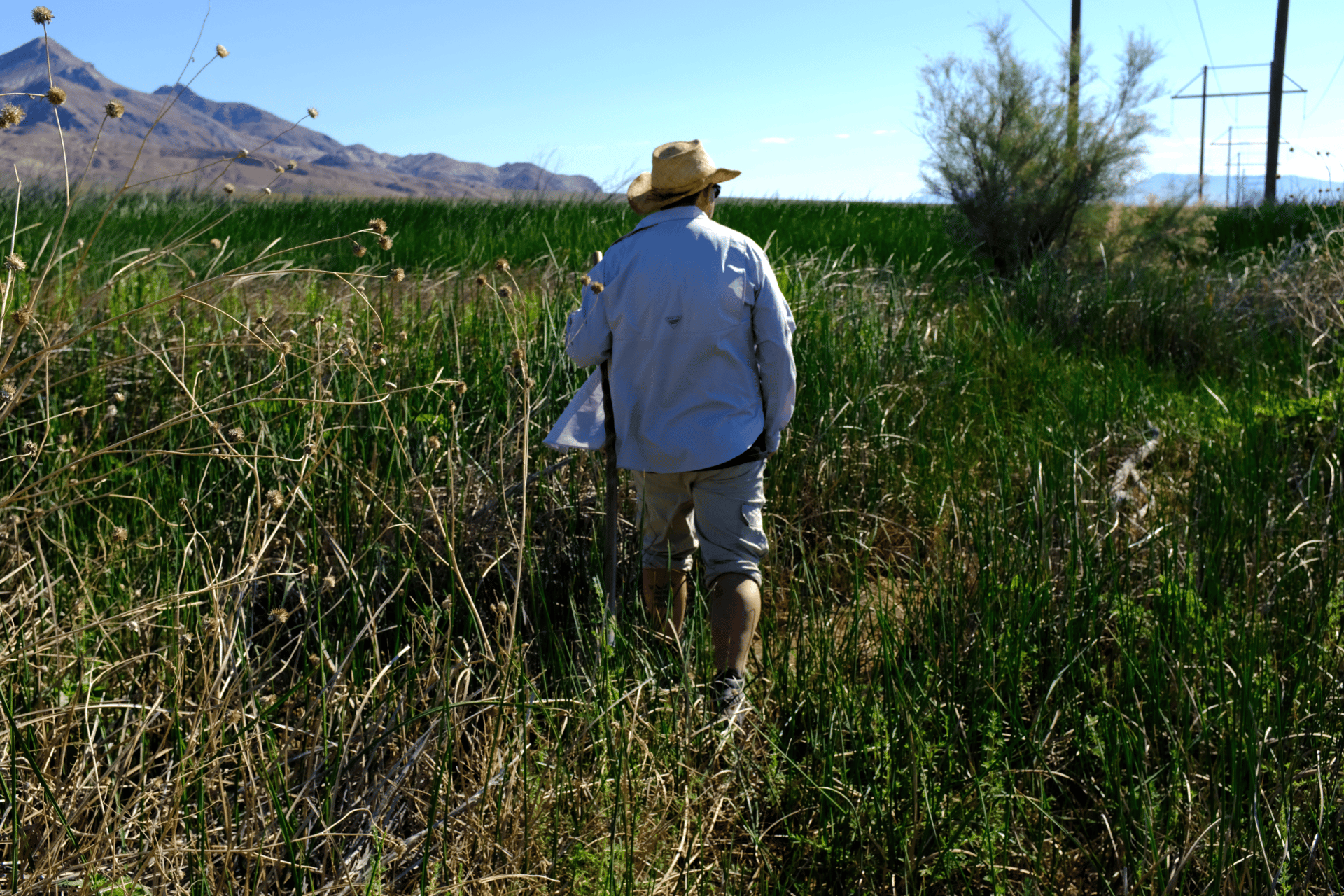
The wind blowing across the plain is dry and hot, but our shoes squelch in the muck underfoot. We follow narrow trails through the grass likely made by the cows grazing nearby, bent over double looking for movement. Mormon crickets frequently draw our eyes, hopping deceptively. Finally, we spot a little toad.
No bigger than the tip of Donnelly’s thumb, the toad is green with brown spots on its back and a stripe down the middle that’s as pale as its belly. Dixie Valley toads top out at two inches in length, and this one is even smaller. It is a relatively ‘new’ species—only found to be genetically and morphologically distinct in 2017. I snap a few quick photographs, and Donnelly carefully releases a tiny creature that could upend more than a decade of research, exploratory drilling, and onerous permitting, bringing construction of two geothermal plants to a grinding halt.
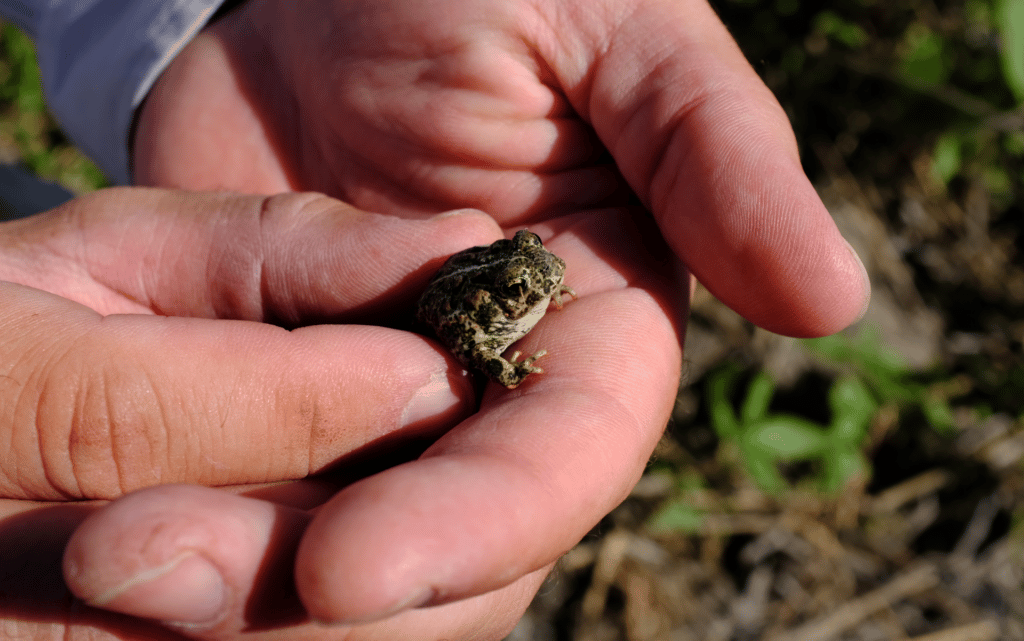
Lawsuits that pit wildlife and ecosystems against alternative energy projects are a dime a dozen in the American West, but solar and wind projects are most frequently in the crosshairs. Geothermal energy is by many accounts a vastly under-used alternative source, the expansion of which will be necessary as part of any broad effort to eliminate fossil fuel use and stave off the worst of the climate crisis. But Donnelly and other conservationists are determined not to let biodiversity be sacrificed for the Dixie Meadows Geothermal Project (or for that matter, most any other energy-production effort).
Critics consider the Center for Biological Diversity’s lawsuit to be part of an obstructionist NIMBYism trend, a hangover from the decades that environmentalists spent trying to block new oil and gas projects, those impulses now wrongly misdirected at alternative energy projects. But the barriers to scaling geothermal energy to its full potential do not begin and end with one lawsuit over a rare and endangered species, or even a handful of lawsuits. There are far greater technological and regulatory hurdles that the industry and the US government need to clear before “harnessing the heat beneath our feet.”
The Great Basin Desert, known informally as the "stretch marks of North America," is dominated by the basin and range formations that span most of Nevada. (NASA/MODIS)
Viewed from above, the Great Basin Desert evinces a pattern: a line of mountains followed by a valley, then another mountain range, then a valley, and so on. These formations, sometimes called the “stretch marks” of North America, give the broader region, from Reno to Salt Lake City down into Mexico, its name: the Basin and Range Province. Nevada is the third most seismically active state and the fastest growing in the country, gaining a couple acres every year as the crust of the Earth spreads and the hotter layers of the mantle, a mix of magma and rock, well upward to fill the gaps. Nevada and the broader Great Basin Desert are riddled with fault lines, cracks in the earth that allow hot water to circulate with ease. It’s an ideal environment for geothermal energy: using the superhot interior of the Earth to make electricity.
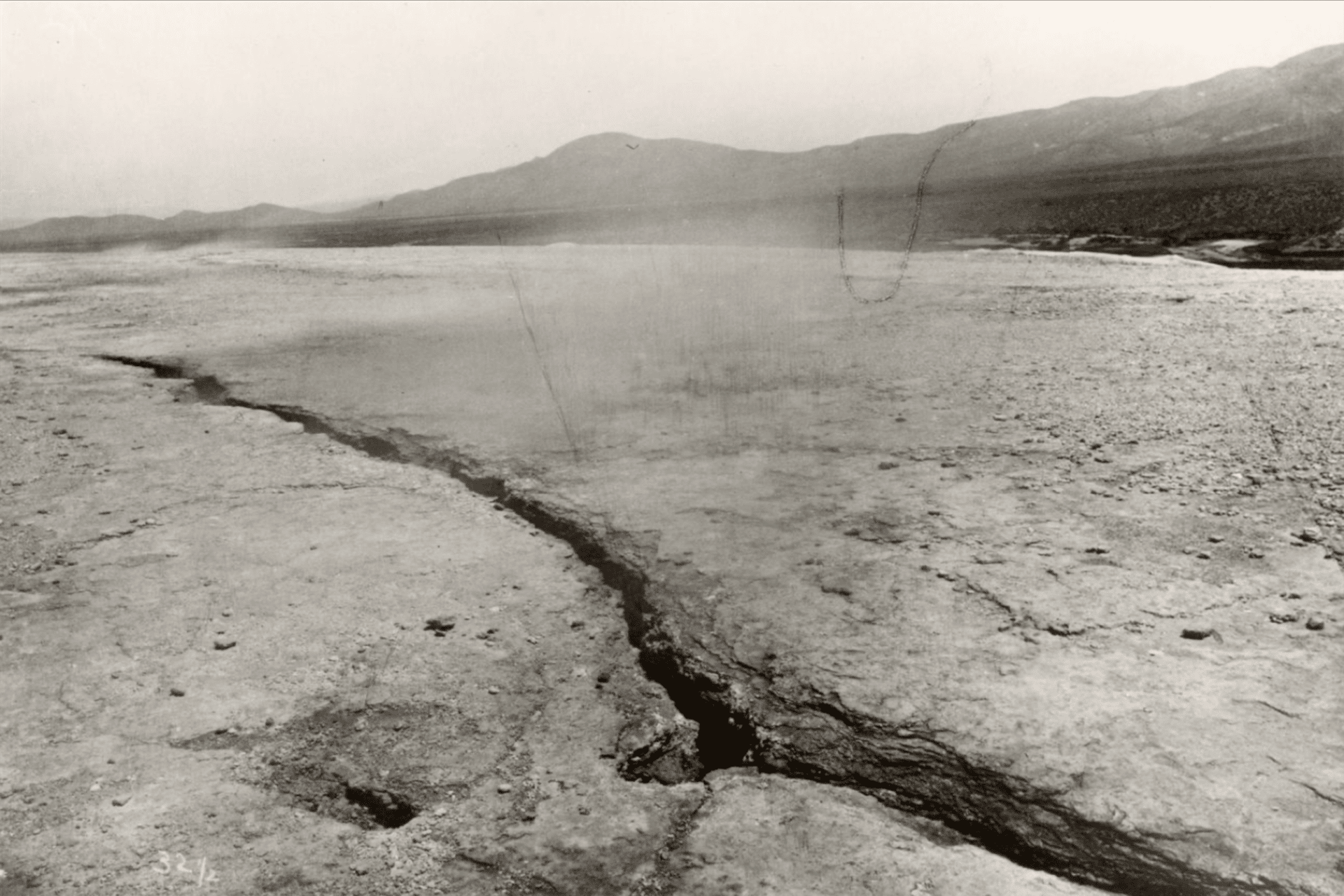
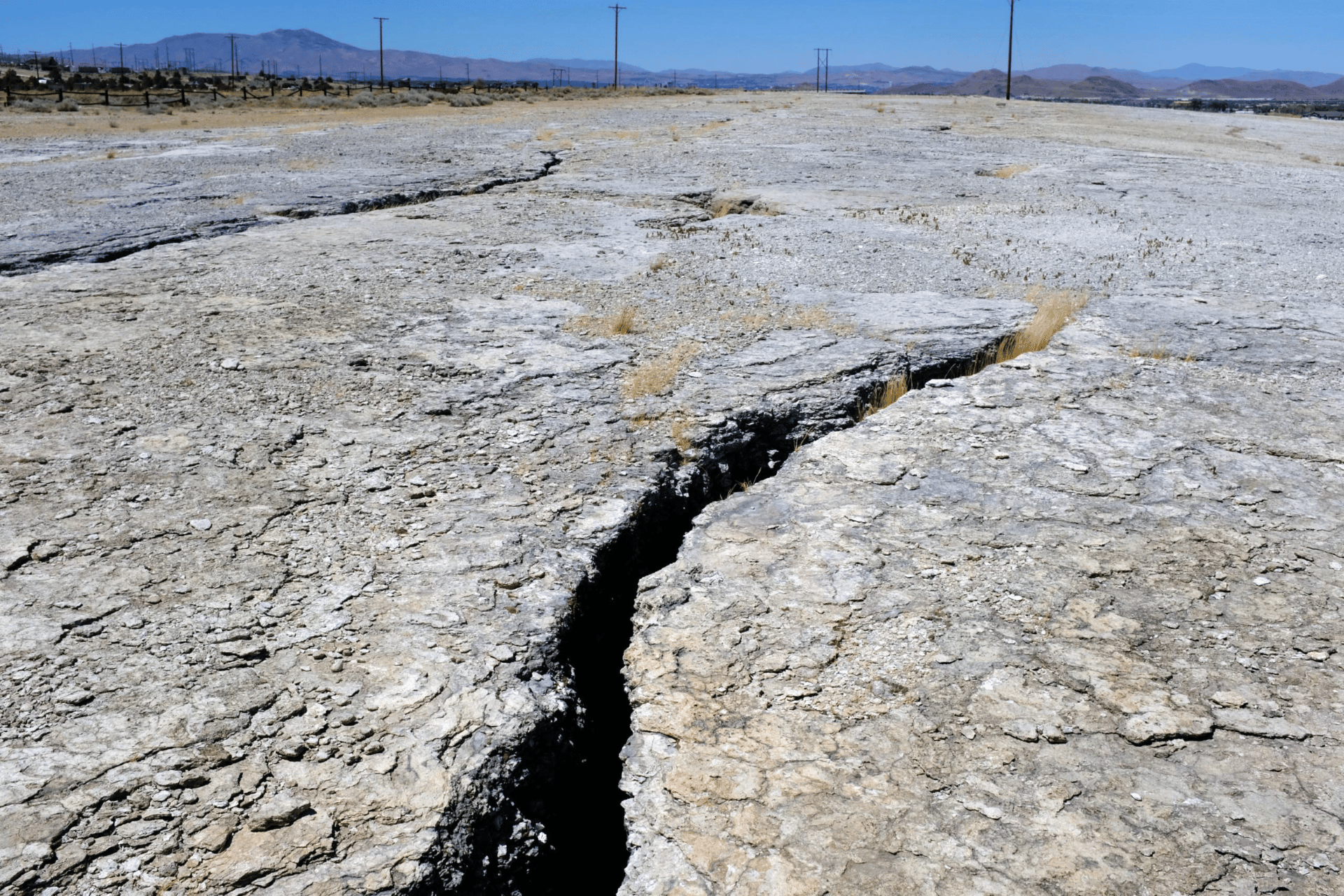
Fissures at Steamboat Hot Springs, just south of Reno, Nevada, photographed by Timothy O’Sullivan in 1868 and by the author in 2022. On cold days, steam can sometimes still be seen rising from the earth.
“The size of this area is comparable to many of the other famous geothermal areas in the world combined,” James Faulds, the state geologist and director of Nevada Bureau of Mines and Geology, says. “You can put in all of western Turkey, which is another hotbed for geothermal. You could put the North Island in New Zealand, another great spot for geothermal. You could put all of Iceland in—you could put all those areas into the Great Basin region, and you would still have room to spare.”
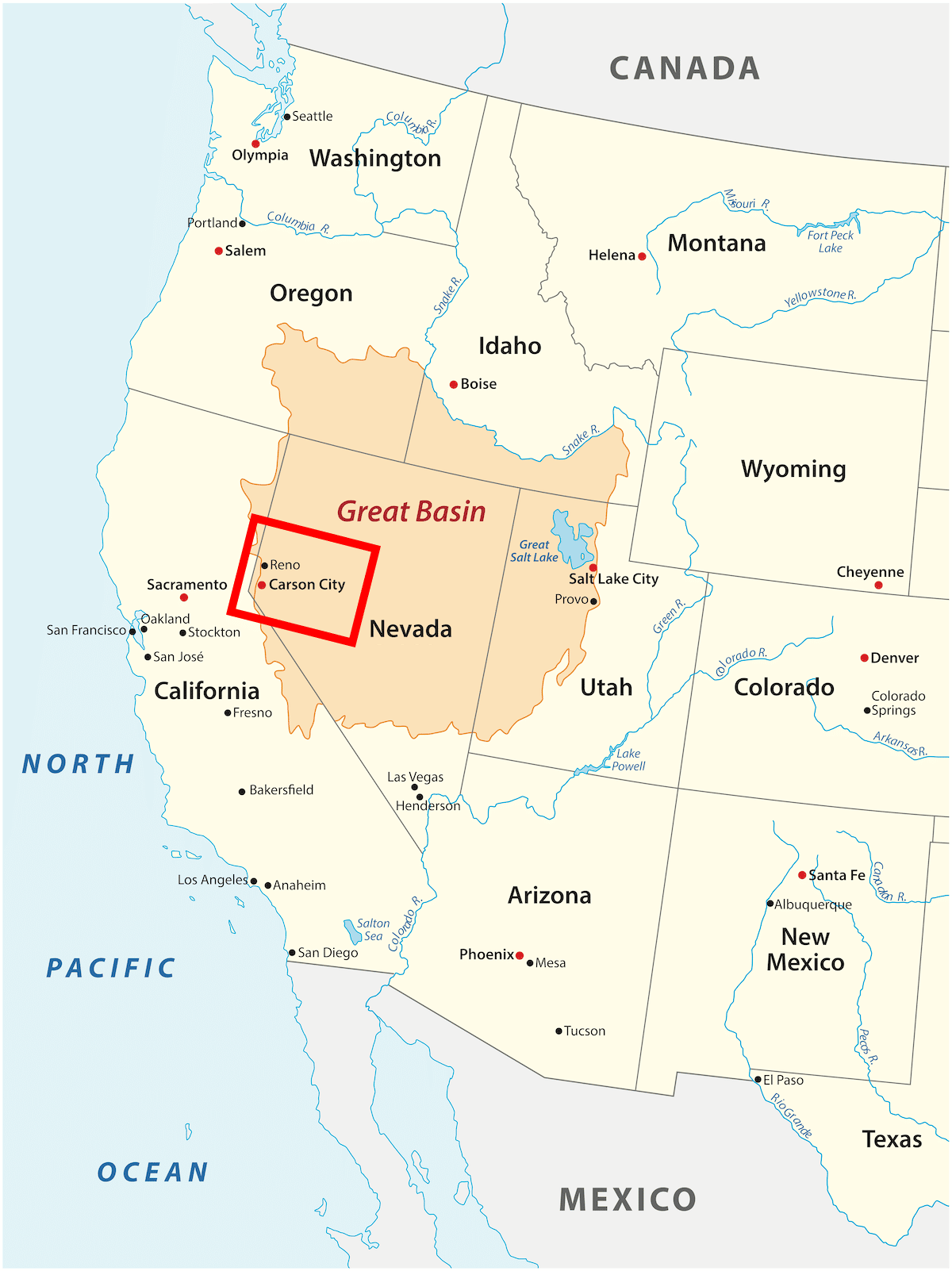
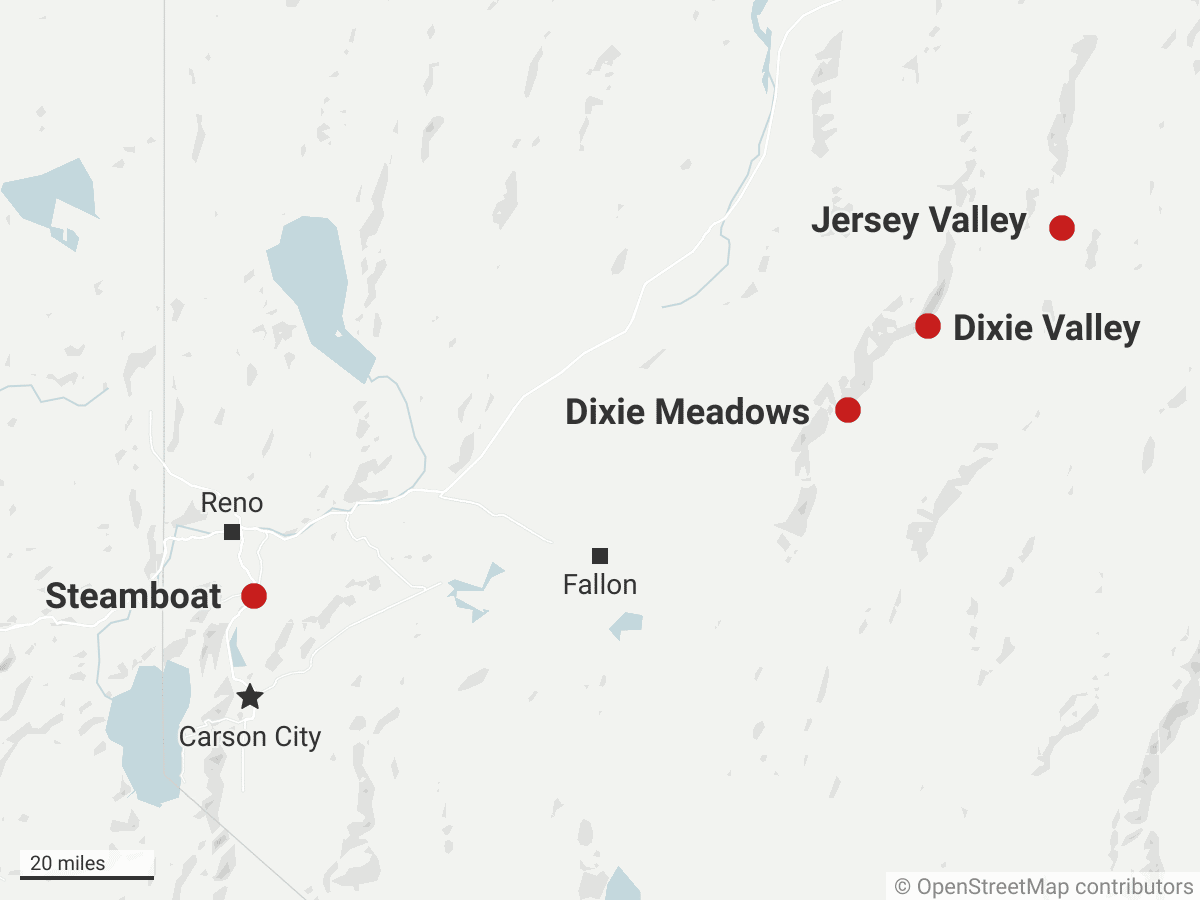
The Great Basin Desert spans about 190,000 square miles across much of Nevada and portions of Idaho, California, and Utah. Four of Ormat’s current or proposed geothermal projects in Nevada are marked in the enlarged map. (Thomas Gaulkin / Shutterstock / Datawrapper)
The United States is the world’s leading producer of geothermal electricity, responsible for almost a quarter of global capacity. California and Nevada combined produce nearly 95 percent of that generation. And while California is the top producer of geothermal energy in the United States, contributing over 70 percent of the country’s geothermal electricity generation (compared to Nevada’s 24 percent), geothermal makes up a greater share of Nevada’s total electricity generation—almost 10 percent.
Even so, geothermal is a mere drop in the bucket of the United States’ present energy mix, making up less than 1 percent of the country’s overall electricity generation. The Energy Department would like to see it make up more than 8 percent of US generation by 2050.
Geothermal energy has many advantages. “All forms of renewable energy are great, but geothermal is 24/7, so it’s good baseload, and it is also scalable, meaning that you can scale back or scale up,” Faulds says. “And the actual physical footprint of a geothermal development is less than solar or wind.”
If the country’s geothermal power generation reached 60 gigawatts-electric by 2050—a nearly 26-fold increase—it could dramatically reduce the country’s greenhouse gas emissions, resulting in up to 516 million metric tons of avoided carbon-dioxide equivalent—more than the 2020 annual emissions of Texas, Florida, Pennsylvania, Ohio, and California combined. Direct use of geothermal energy, for heating and cooling purposes, could have an even greater impact. It’s a daunting goal, but one the Energy Department considers achievable, with advances in technology and regulatory reforms.
“It can and should be a bigger part of the nation’s energy budget,” Faulds says. “And I think we’ll get there.”
Direct Use
Casino gambles on geothermal—and wins big

Using geothermal fluid in heating and cooling systems can help big institutions, like universities, city governments, and even upscale resorts save money and reduce their carbon footprint. The geothermal system at the Peppermill Reno Resort paid for itself in three years, two years faster than expected.
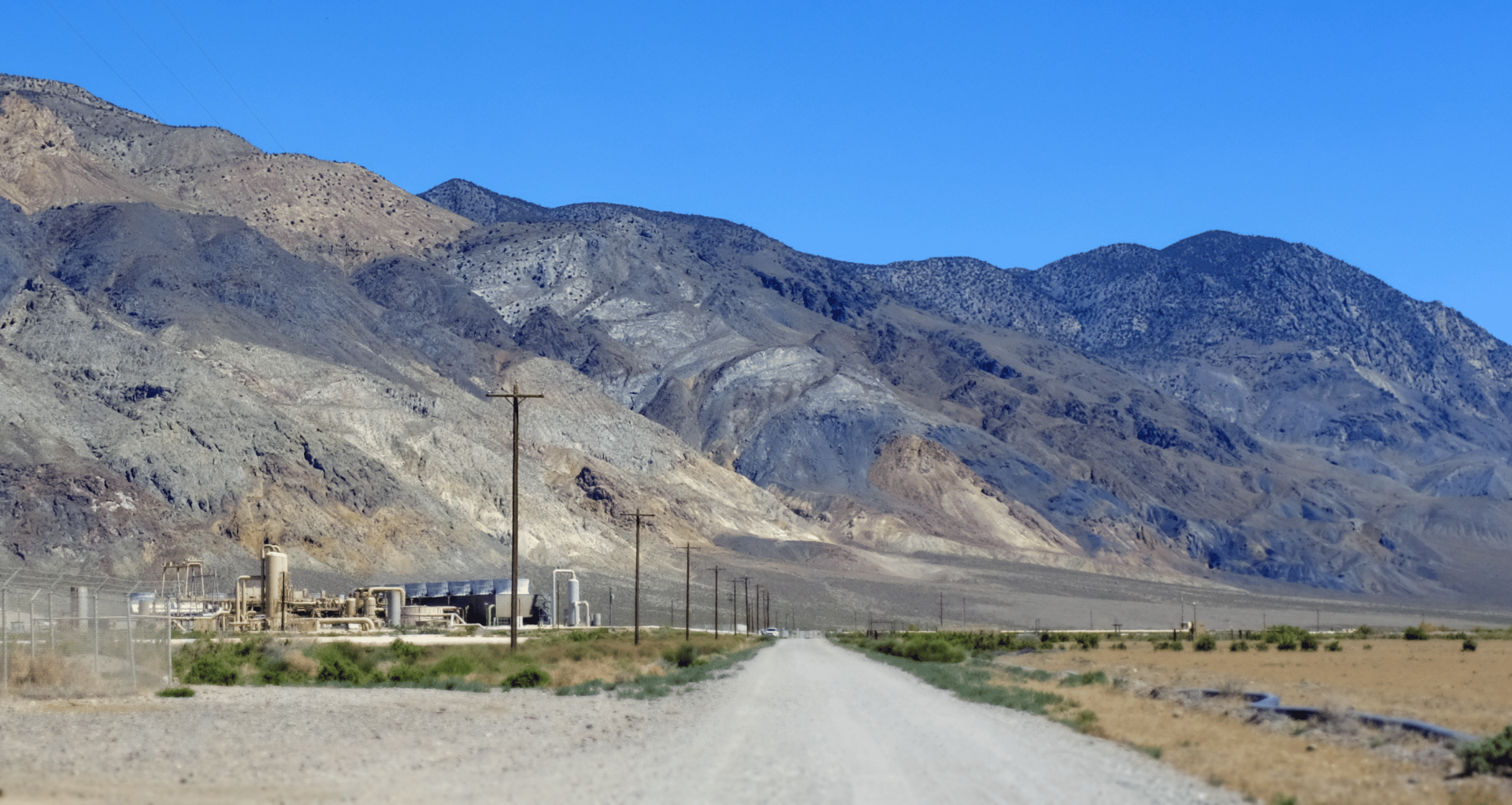
The Dixie Valley geothermal plant at the foot of the Stillwater Range. (Jessica McKenzie)
Ormat Technologies, the Reno-based company behind the Dixie Meadows Geothermal Project, is the second largest geothermal power producer in the United States. Ormat’s first geothermal plant was also the first geothermal plant in Nevada, a 2-megawatt plant in Wabuska that went online in 1984.
Ormat began exploring the geothermal potential of Dixie Meadows in 2007, which really goes to show how long it can take to get a geothermal plant over the finish line. The Bureau of Land Management finally approved the project in November 2021, greenlighting the construction of two 30-megawatt geothermal power plants and up to 18 production and injection well sites. In the press release, the Bureau of Land Management pointed out that the project is in line with President Biden’s January 2021 executive order to take a “government-wide approach to the climate crisis,” as well as the Energy Act of 2020, which included a section on advancing geothermal energy. The act specified that the administration would seek to permit at least 25 gigawatts of wind, solar, and geothermal projects on federal land by 2025.
A couple weeks later, the Center for Biological Diversity, along with the Fallon Paiute-Shoshone Tribe, sued the agency over that approval, citing the threat to the Dixie Valley toad and to the hot springs, which are of spiritual significance to the tribe. They notched a temporary win in January, when a judge issued a 90-day injunction, but Ormat appealed and it was overturned in February, clearing the way for Ormat to resume construction. Then, in early April, the Fish and Wildlife Service gave the Dixie Valley toad an emergency listing as endangered because of the “significant risk to the well-being of the species” that the geothermal project posed. This gave the Center for Biological Diversity and the Fallon Paiute-Shoshone Tribe new grounds to sue the Bureau of Land Management, which the two groups promptly did.
“Is the geothermal gonna dry up the spring? Very possibly,” Donnelly says as we tramp through Dixie Meadows. “Will it change the springs? Definitely. There’s zero doubt that the springs will be changed by the geothermal project. And that alone is enough to potentially drive the toad to extinction.”
In public comments to the Fish and Wildlife Service, Ormat has countered that the agency “overstated” the impact the geothermal project could have on the Dixie Valley toad. Based on tests the company ran during the exploratory phase, Ormat argues that the geothermal reservoir that the plants would draw on is distinct enough from the hot springs that flow into the meadow to have little to no interference with those springs.
That’s the challenge with geothermal energy: Every site has unique characteristics, from the rock types to the fault lines to the way water flows through the system. Geophysicists and hydrologists can make educated guesses about what’s going on underground, but it’s still largely a matter of drilling around, and finding out.
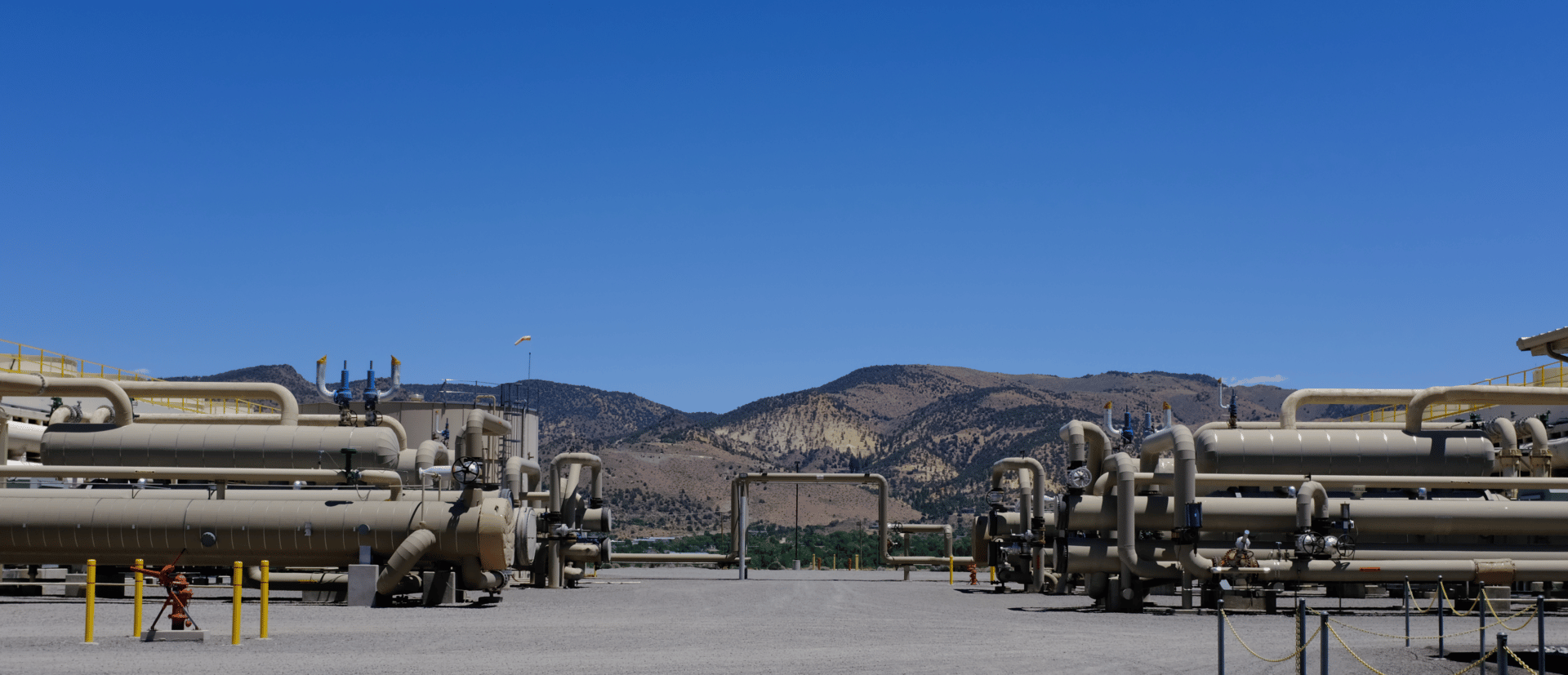
Ormat’s Steamboat Hills geothermal power plant, just south of Reno, Nevada. (Jessica McKenzie)
Approximately 50 miles west of Dixie Valley as the crow flies—just 10 miles south of Reno—is the Steamboat Hills Geothermal Complex, a sprawling network of roads, pipes, turbines, and condenser fans. A wildfire came through the complex the previous June, leaving a trail of brown and charred evergreens in its wake, a reminder of the climate crisis that geothermal energy could help stave off.
In the 19th century, Steamboat was a stagecoach stop and tourist attraction, drawing visitors who came to see a 70-foot geyser and to soak in the baths built around the geothermal hot springs. But in 1900, an earthquake caused the geyser and many of the springs to disappear, and most of the spas and bathhouses closed. But even though it wasn’t as apparent, there was still plenty of geothermal activity hidden underground.
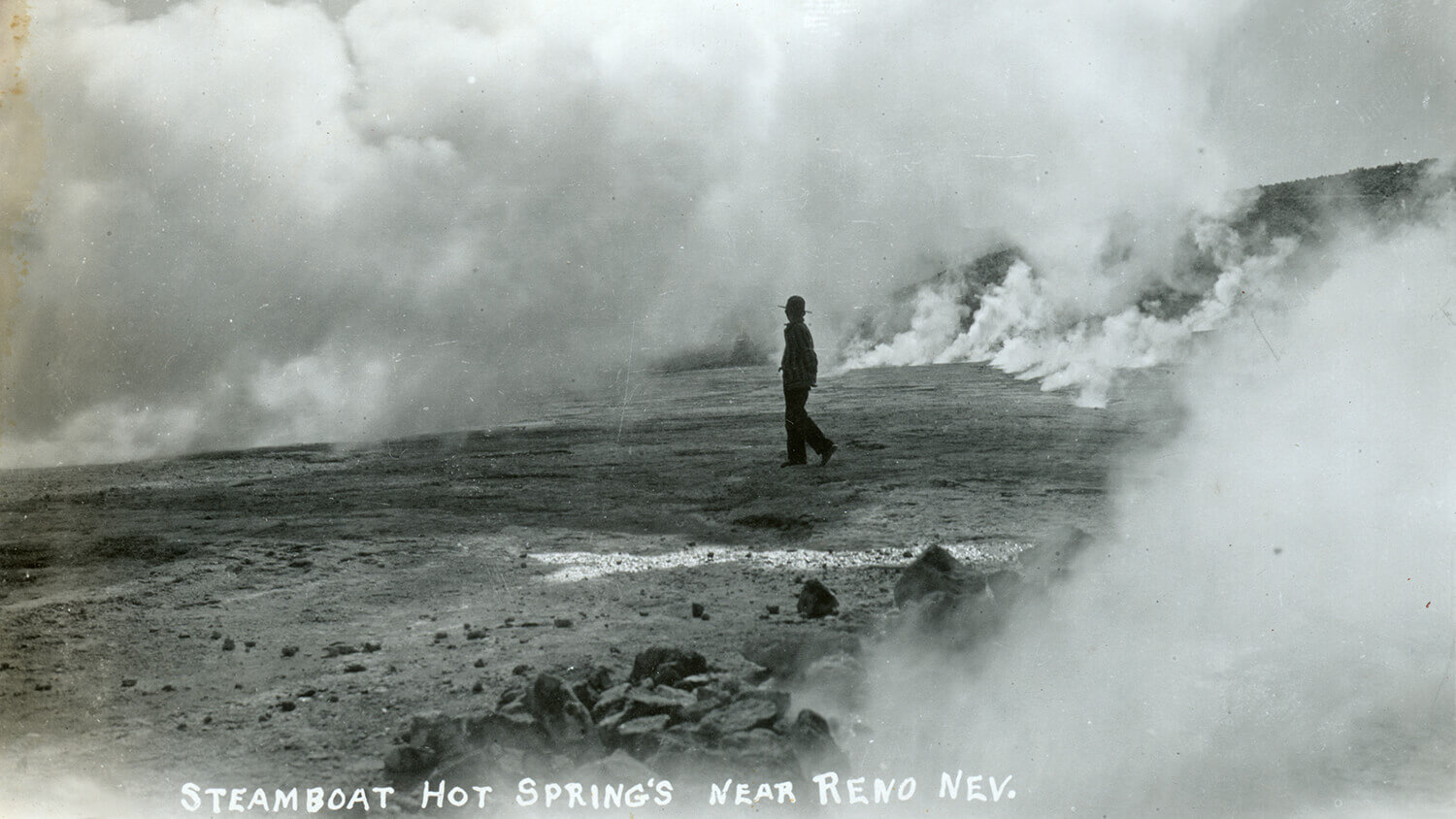
The first geothermal plant on site was constructed in the 1980s. Steamboat 1 was shuttered about a decade ago and has since been partially demolished, the geothermal water, or brine, diverted to a newer, more efficient plant. Steamboat 2 and 3 were built in the 90s. Newer plants—named Galena 1, Galena 2, and Galena 3—followed in 2005, 2007, and 2008, respectively. All told, there are six active plants spread out across the complex, which this year have produced an average of 67 megawatts (the plants are more efficient and produce more power in winter when the outside conditions are cooler).
Turning the Earth’s heat into electricity requires three things: heat, fluid, and permeability. Most geothermal plants in the state of Nevada, including those at Steamboat, use a binary steam system, in which hot water is pumped out of the ground and used to heat a secondary fluid with a lower boiling point than water, like pentane, or a liquified petroleum gas like butane, causing it to flash, meaning vaporize. The vapor from that secondary fluid spins the turbine, producing electricity.
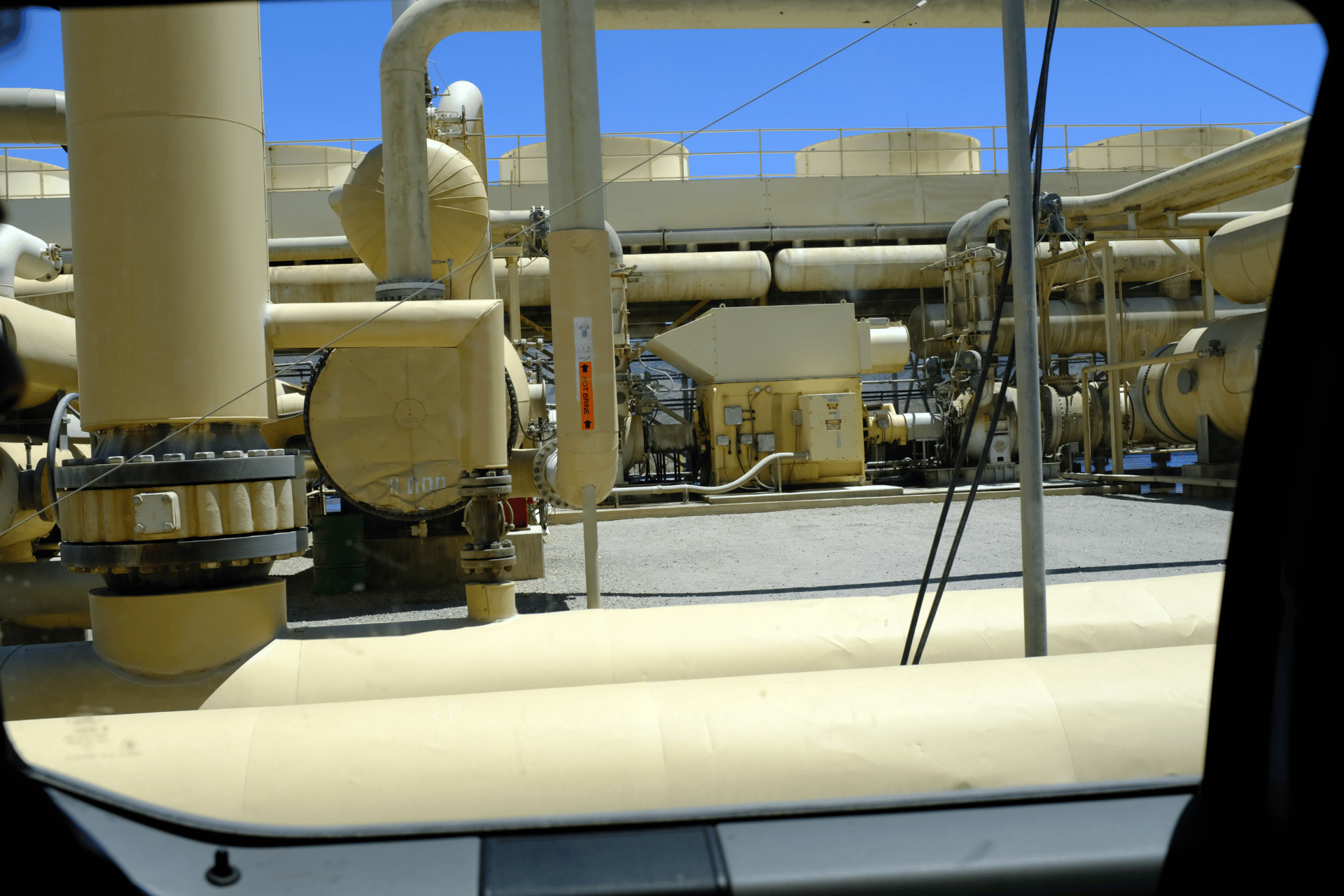
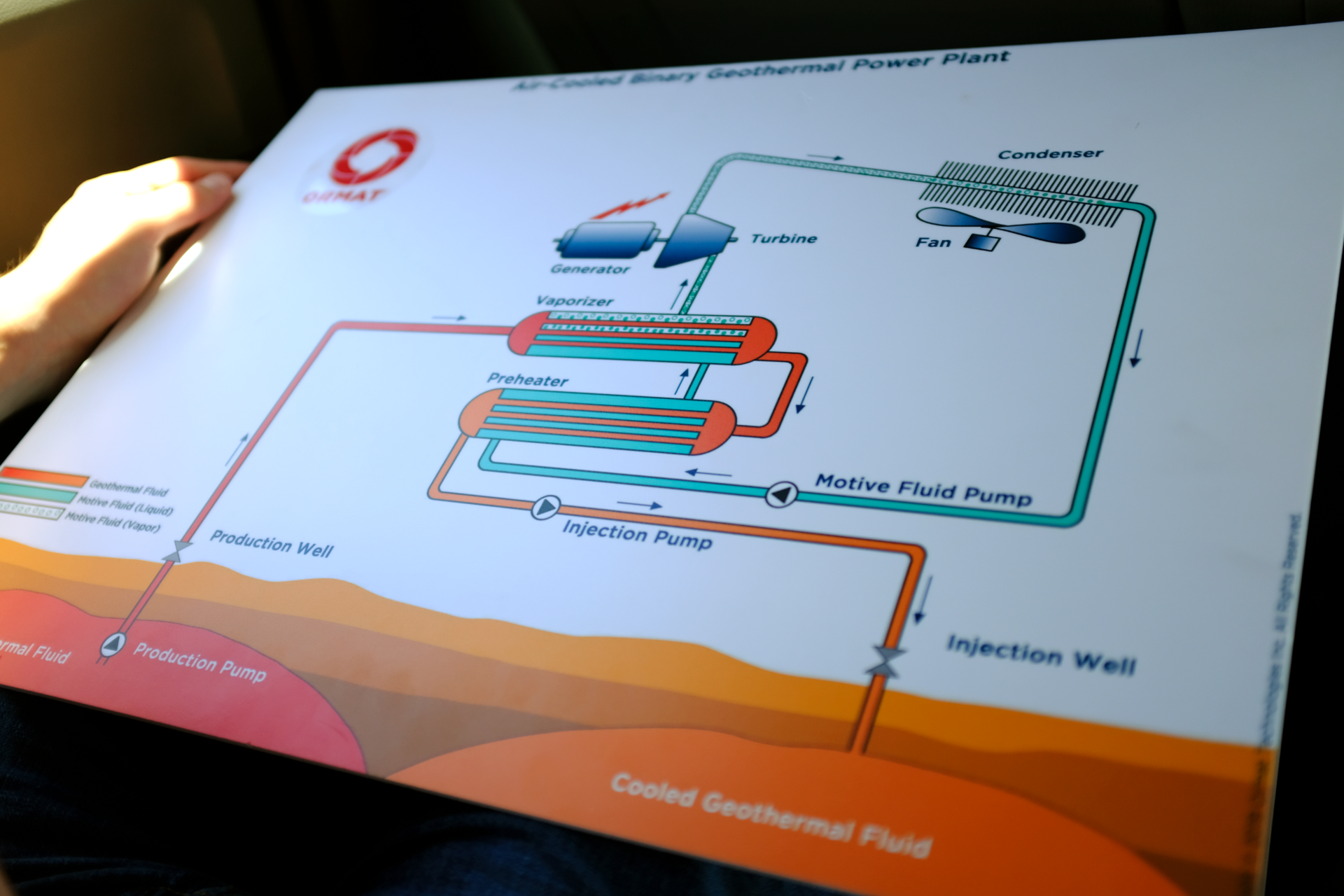
Touring Ormat’s Steamboat Hills geothermal complex. (Jessica McKenzie)
From behind the wheel of his truck, plant manager Lucas Schmidt, who has worked at Steamboat for 18 years, explains that the complex draws on two geothermal reservoirs: the lower reservoir, mere hundreds of feet below the surface, and the upper reservoir, several thousand feet below the surface. Water temperatures in these reservoirs range from 260 to 340 degrees Fahrenheit.
Generally, the temperature of a geothermal system should be at least 120 degrees Celsius (248 degrees Fahrenheit) to be suitable for producing electricity; otherwise, the economics of converting heat to electricity don’t quite work out. (Not that it’s impossible; the Wabuska plant produces approximately 2 megawatts of electricity from a mere 98 degrees Celsius, or 208 degrees Fahrenheit.)
Where and how the geothermal brine is reinjected is crucial. The brine must be returned via a second well far enough away from the source that it won’t immediately cool the system, but close enough so it can slowly filter back to the production well, becoming reheated in the process. That’s why geothermal systems need permeability—porosity or cracks in the rock—so the water can return to the source.
“If you don’t get your injection production strategy right, for instance, you can short circuit your system so that then you’re cooling it off,” says Paul Schwering, a geophysicist who researches geothermal energy resources at Sandia National Laboratories.
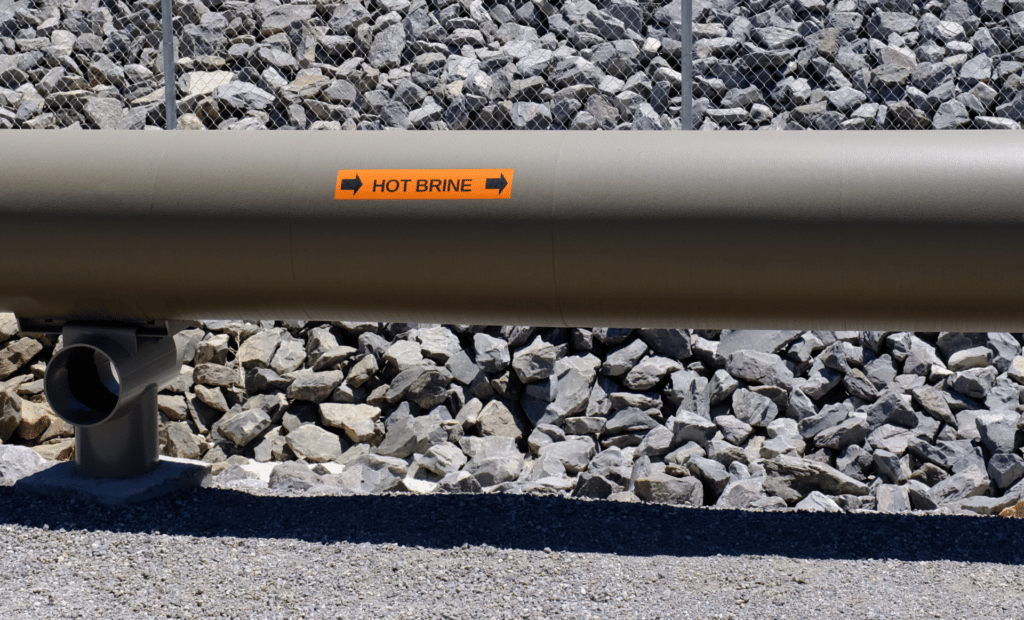
Drawing hot water out and pumping cooler water back into a reservoir slowly but surely cools the overall system, even with a well-designed reinjection scheme. Schmidt says Steamboat’s reservoirs experience an average decline of 2 degrees a year, and the productivity of the plants has declined along with the temperature of the resource. They had higher electricity generation a decade ago. “The highest generation I recall, being in Steamboat in a 24-hour period, was 117 megawatts,” Schmidt says.
While the 1900 earthquake brought the most dramatic physical changes to Steamboat, the geothermal plants have also left their mark.
“Obviously, there used to be a lot of surface activity in regards to the geothermal in this area,” Schmidt says. “With Ormat coming in and using that energy, a lot of the surface activity you know kind of halted. There is some mud pots and fumaroles throughout the property but yeah, with the use of the energy the surface activity has stopped. Which actually is a pretty good thing; otherwise, South Reno would smell like sulfur.”
Drone footage of construction at the Dixie Meadows geothermal project. (Patrick Donnelly / Center for Biological Diversity)
That is the crux of the issue in Dixie Meadows: Will the geothermal plants alter the surface expression of the hot springs, or cool the geothermal reservoir, and by extension the springs?
In 2017, Ormat hired a consultant to conduct flow and tracer tests. From one of the exploratory wells deemed best for production, the company pumped an average of 1,600 gallons of geothermal water per minute and then returned that water via two different reinjection wells, while monitoring the spring for temperature, water levels, and electrical conductivity. At the five locations picked for monitoring, the consultant found “no apparent influence on the springs.” Chemical tracers were also added to the injection wells, to see if they showed up in the springs. The monitoring detected “isolated” instances of “very small quantities of tracer” at each spring. These findings were qualified by the observation that these amounts “did not exhibit the appearance of a typical solute breakthrough curve, which would show sustained elevated concentrations following an initial rise.” It was hypothesized that the traces found were the result of cross-contamination during other tests. The conclusion was that the hot springs are not “significantly” connected to the geothermal resource and therefore would not be affected by the power plants.
However, as Tom Myers, a hydrologic consultant, pointed out in a 2021 report prepared for the Center for Biological Diversity, the completed project would pump up to 14,000 gallons of water per minute. Myers also took issue with Ormat’s assessment of the site’s geology and conceptual model of how geothermal, groundwater, and precipitation interact in Dixie Meadows, writing that many of their assertions were inaccurate or unsubstantiated. He concluded that not enough is known about the hydrologic systems in Dixie Meadows to develop it for geothermal energy “without potentially substantially harming the springs.”
Geothermal plants in other locations have dried up nearby hot springs “many, many times,” Donnelly says. “In fact, the [US Geological Survey] in a report says this is the rule, not the exception.”
That 2000 report by Michael Sorrey catalogued changes to surface features at multiple geothermal sites, in Nevada and elsewhere, including Steamboat, where the report notes hot springs and geysers were active until 1987, when the use of geothermal wells ramped up. The report also noted that the Dixie Valley geothermal plant (which is different from the proposed Dixie Meadows plant) caused an increase in steam activity and land subsidence.
Donnelly and I drive 20 miles further down the road to visit that site, which came online in 1988 and is currently owned and operated by Ormat. I ask if it had any adverse effect on the environment.
“Well, we don’t know,” Donnelly says. “There may have been hot springs here, before. It’s not a problem at the moment.”
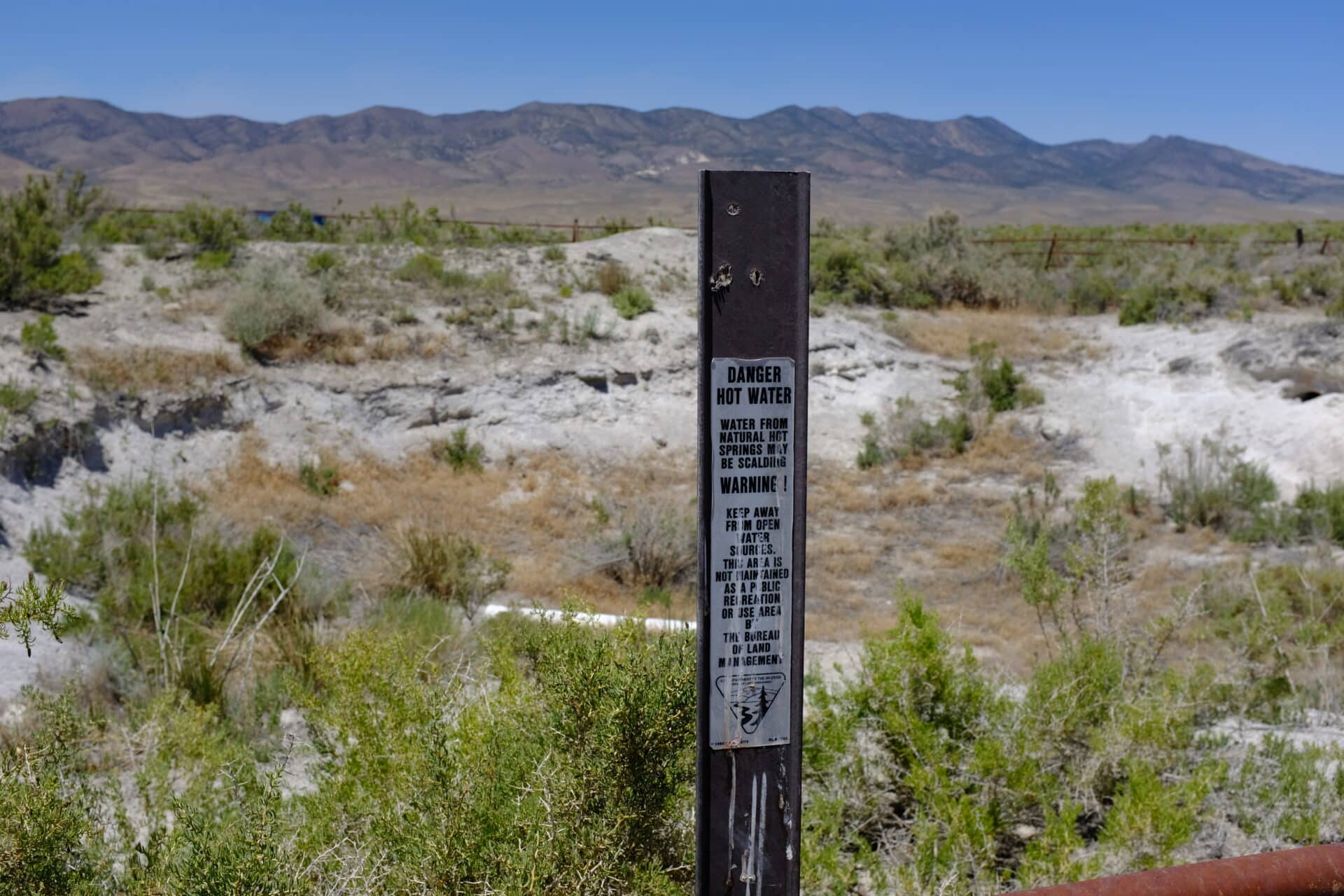
It’s a different story another 25 miles down the road, in the adjacent Jersey Valley. We pull over next to a depression in the ground, fenced off with posted signs warning “Danger Hot Water.” But there’s no water to be seen, just a dry, crusty basin with a pipe at the center. Donnelly explains this was the former outflow zone of the Jersey Valley hot spring. A nearby geothermal plant, which is also owned by Ormat, came online in 2011 and just a few short years later, between 2013 and 2015, dried up the hot springs.
According to the Bureau of Land Management, the Jersey Valley hot spring flowed continuously for over 100 years, averaging temperatures of around 120 degrees Fahrenheit. The 40-foot diameter pool filled from the bottom at a rate of 35 to 75 gallons per minute and would spill over and flow down into the valley.
“You could see that would be meadow out there, that would be green,” Donnelly says. “You can see where all the water has been, ‘cause there’s leached salts.”
“No data has definitively established Ormat as responsible for the loss of flow there, even though we’re there,” Paul Thomsen, Ormat’s vice president of business development, says when I reach him by phone. Thomsen explains that while developing the Jersey Valley project, Ormat encountered an improperly plugged and abandoned mining core hole, which basically caused a leak in the geothermal system and depressurized it. Ormat rejiggered their production and reinjection strategy and resumed operations. The only reason they had yet to restore flow to the hot spring, Thomsen says, was because of a water rights squabble between neighboring landowners.
“We easily could have put water back into that spring, or pressurized the system, but for two entities in Nevada wanted to have a scrap over water rights,” Thomsen says. “So that delayed BLM being able to implement their mitigation, but I’m happy to report that in spite of the bureaucratic roadblocks, BLM has issued its decision for the environmental assessment for a mitigation pipeline. And Ormat will return water to the Jersey Valley spring and move forward.”
“When?” I ask.
“Immediately.”
Ormat has argued that through careful monitoring of the Dixie Meadows hot springs, the company can catch any changes to temperature or flow rate and then either mitigate the problem or cease operations. The company has an Aquatic Resources Monitoring and Mitigation Plan, which outlines how the company will respond if and when changes to the hot springs or meadows occur.
Donnelly argues that the fact Ormat allowed Jersey Valley hot spring to dry up over a period of years and have yet to restore flow to the hot spring shows that is easier said than done. Thomsen counters that the Jersey Valley situation was entirely unique and unlike Dixie Meadows.
Still, if something similar were to happen to Dixie Meadows, and take even a fraction as long to mitigate, it could be devastating to the toad, and to other wildlife.
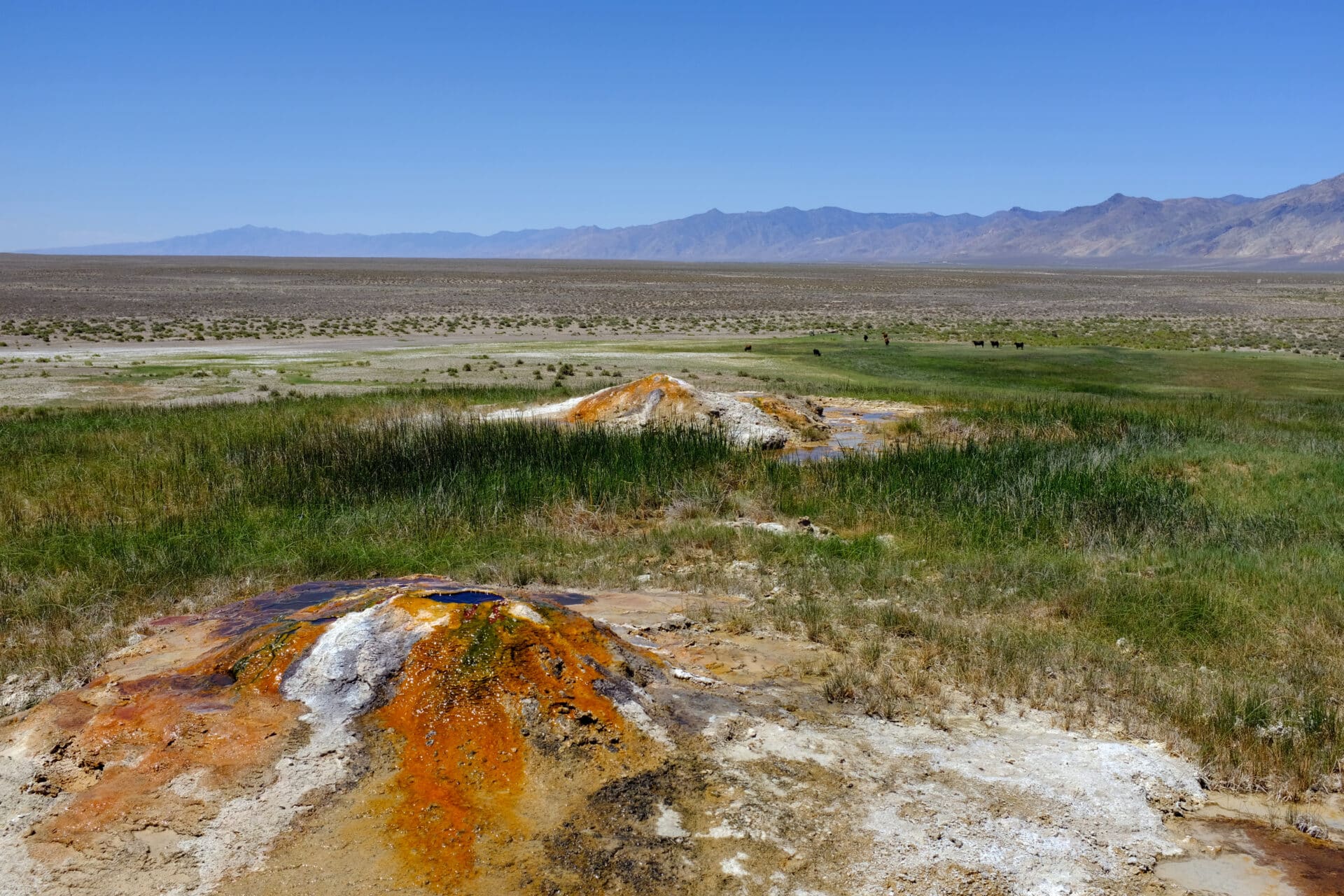
Travertine cones at Hyder Hot Springs in Dixie Valley. Historically, the easiest way to find geothermal reservoirs was to look for obvious surface expressions like these. (Jessica McKenzie)
Is there a better way?
There are more than 400 known geothermal systems in the Great Basin region. Many of those have surface expressions, like hot springs or fumaroles. But there are also hidden or blind geothermal systems, meaning there’s no hot water or steam activity on the surface to show they’re there. Scientists estimate that 40 to 75 percent of the geothermal systems in the Great Basin are hidden.
Geothermal developers are caught between a rock and a hard place when it comes to exploiting new geothermal sites. The easiest and therefore cheapest way to find a geothermal reservoir is to drill near hot springs and fumaroles, which are surefire signs that there is geothermal activity below, although there’s no guarantee it will be suitable for energy production.
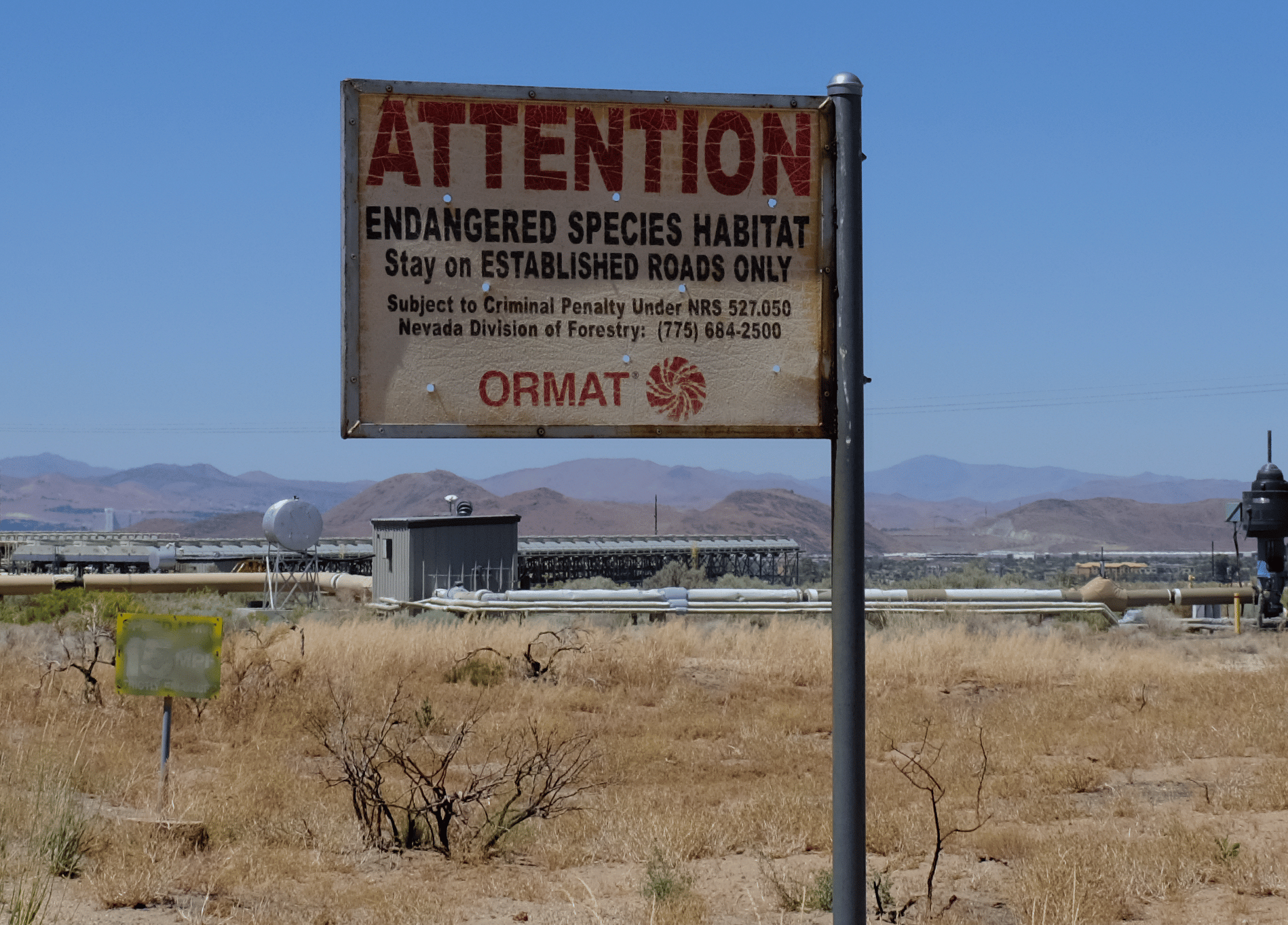
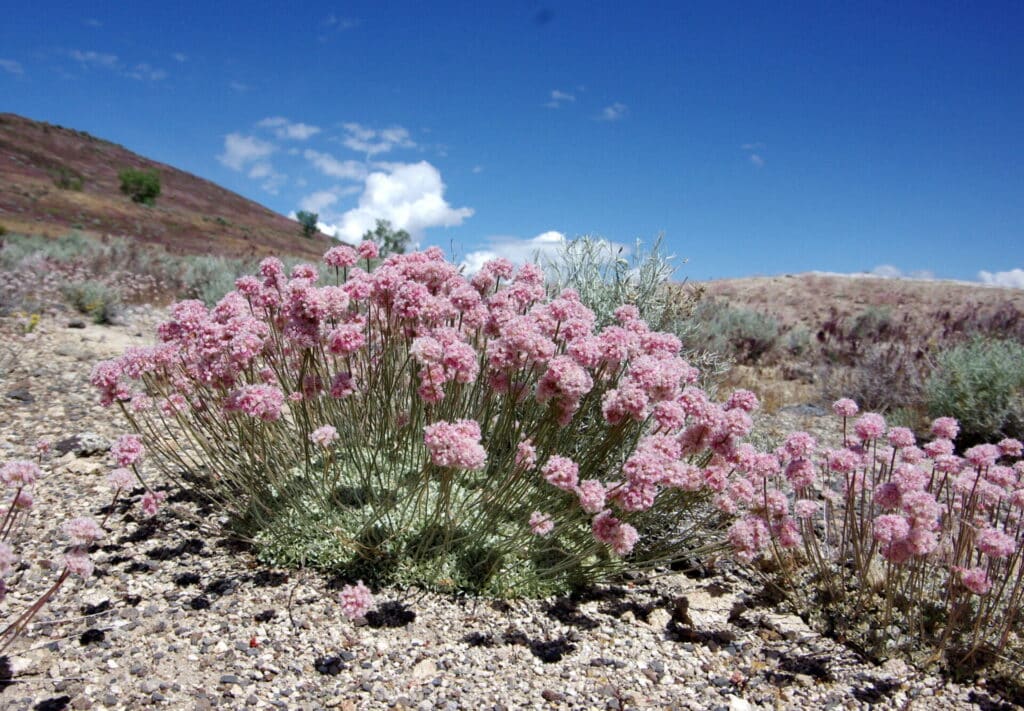
However, these sites are more likely to have rare or even unique ecosystems associated with them. The Great Basin Desert is one of the most arid regions in the country. Just one percent of the land has a water feature, like a seep or a spring, and geothermal outflows become little pockets of essential habitat. Steamboat is the only place where the endangered plant known as steamboat buckwheat grows. There’s also a rare springsnail found in Dixie Meadows, which Donnelly says his organization could petition to be listed as endangered but doesn’t need to because protecting the Dixie Valley toad also protects the snail. All told, Donnelly is tracking six species endangered by geothermal plants in the Great Basin. These sites may also have special significance to Native American tribes, like the Fallon Paiute-Shoshone Tribe. The Santa Fe National Forest rejected a proposal to develop geothermal energy within its boundaries in part because of the negative impact it would have on sites of sacred and cultural significance.
As the director of the Great Basin Center for Geothermal Energy at the University of Nevada, Reno, Bridget Ayling studies how to reduce the exploration risk for uncovering hidden geothermal systems.
“We’ve still got thousands of megawatts of these hydrothermal resources likely to be there,” Ayling says. “How do we discover them? How do we find them, without having these surface indications that help narrow your focus? That’s the challenge.”
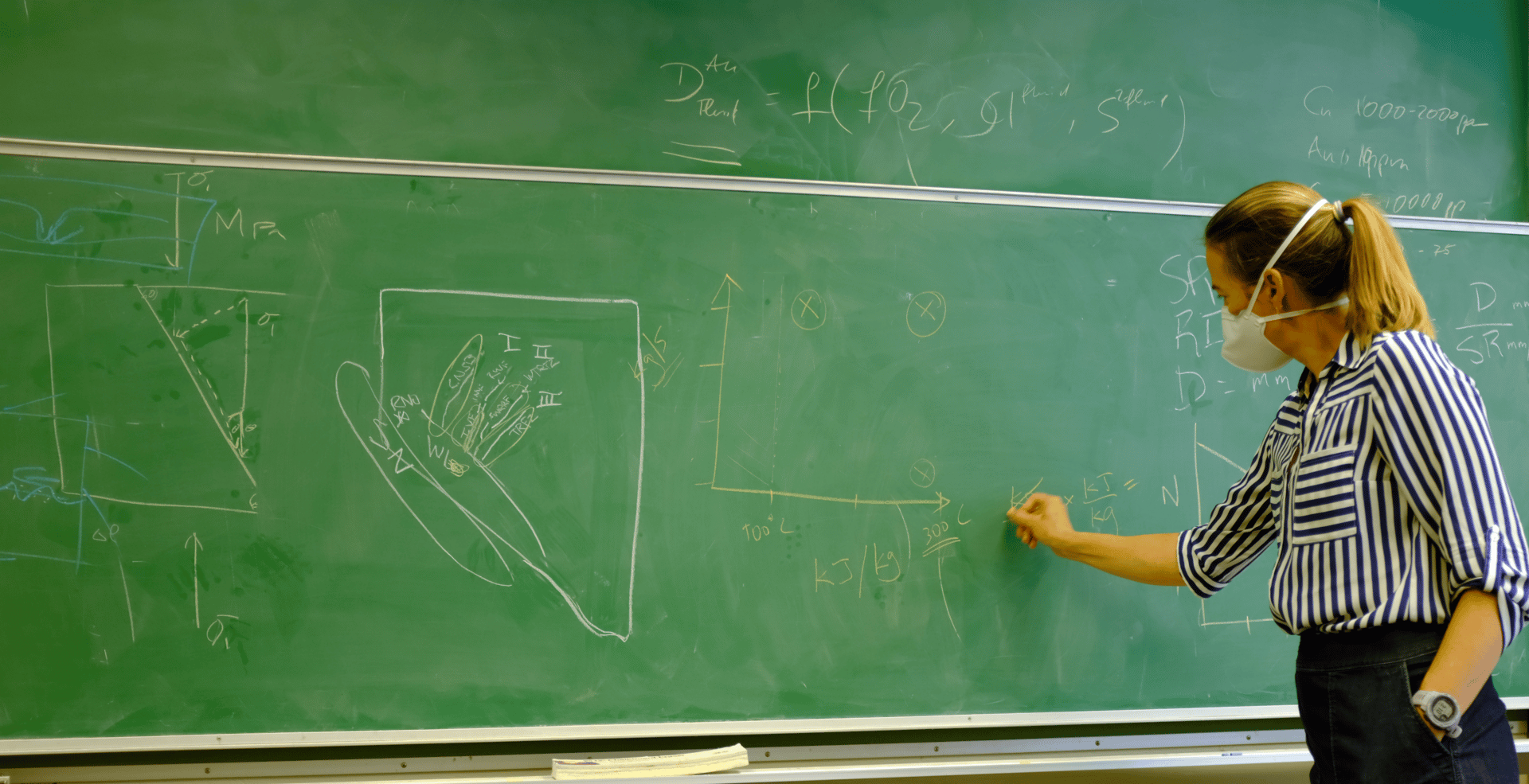
Ayling and her colleagues identify the characteristics of known geothermal resources, and then use machine learning and advanced geostatistics to find other sites that might have hidden geothermal resources. They factor in up to 15 types of geoscience data: geophysical data, geochemical data, geological data, geodetic data, etc. Different characteristics are weighted according to their importance as predictors or proxies for geothermal systems.
“Our work is really focused on the exploration and the discovery of new systems and how we can do that more efficiently, more economically, more effectively,” Ayling says. “How can we help explorers reduce the exploration risk, and reduce the cost of drilling, so we’re not drilling so many dry holes or holes that are not hot.”
Eventually, they test their theories by drilling where the models say they are likely to find hidden geothermal resources. In some cases, Ayling’s team will work with energy companies that already have exploration rights to the land and could convert an exploration well to a production well if the search pans out.
While the primary purpose of this research is to expand the number of geothermal energy resources in the United States’ energy portfolio, exploiting hidden geothermal resources could have a secondary benefit: It is less likely to impact the ecosystems that crop up around surface expressions.
“At least you wouldn’t have to worry about things like the Dixie Valley toad,” says Faulds, who also studies hidden systems. It’s a win-win for alternative energy and biodiversity.
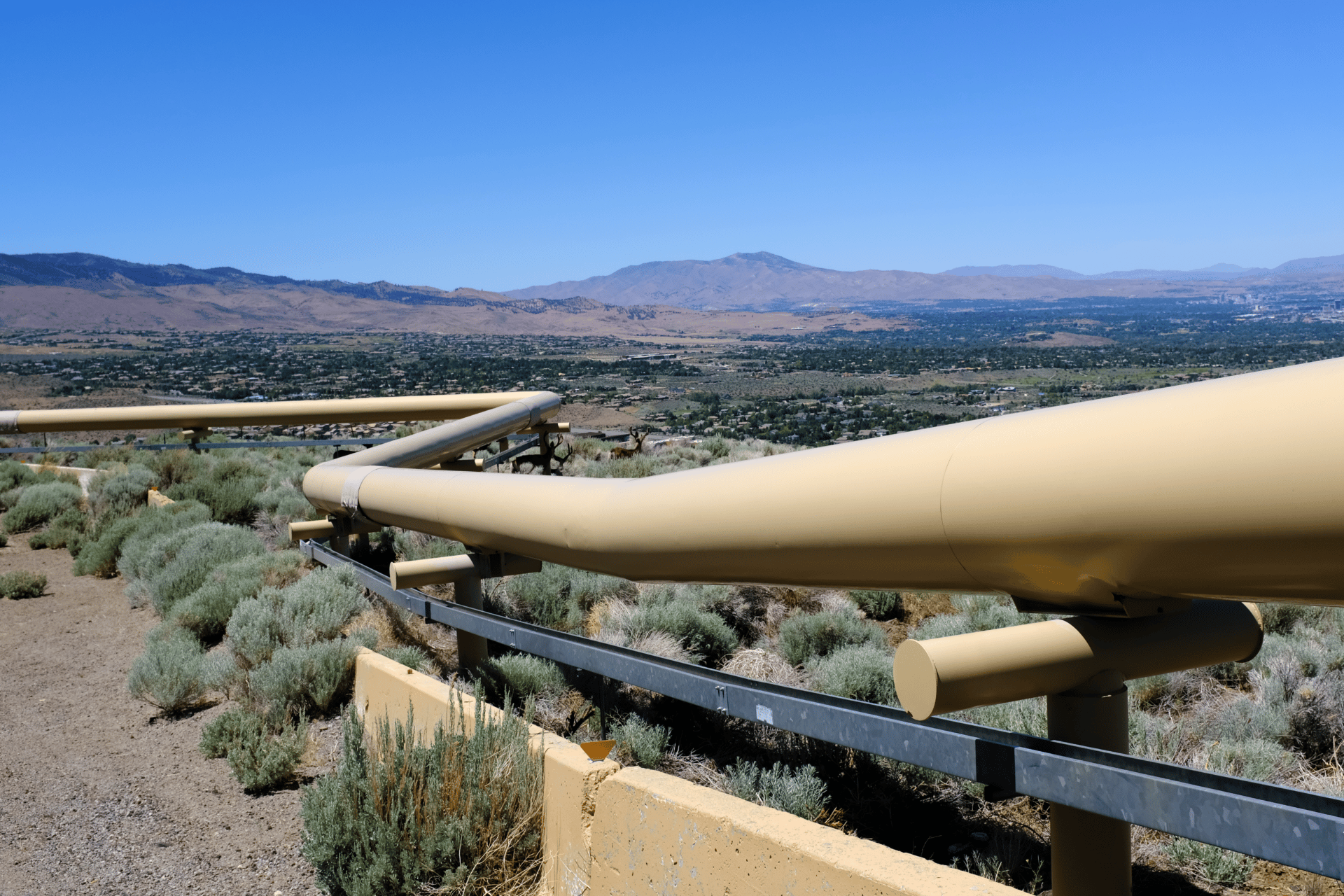
Deer sheltering under a pipe at the Steamboat Hills geothermal complex, with the outskirts of Reno in the distance. (Jessica McKenzie)
There’s no doubt that geothermal adoption has lagged in the United States. Between 2008 and 2015, geothermal electricity production increased only 6 percent, while solar generation in that same period soared, increasing 2,700 percent. A toad is the least of this industry’s problems.
A 1980 General Accounting Office report on obstacles to widespread geothermal energy adoption identified four key impediments: “lack of reliable detailed resource information; lack of proven technology for defining, extracting, and using most of the recoverable resources for electric applications; complexities of administrative and regulatory requirements on development; and insufficient knowledge of possible environmental impacts and control technology.”
The Energy Department’s GeoVision report on geothermal, published in 2019, found many of the same issues plaguing the sector nearly 40 years later. Notably, even with several decades of technological advancements, geothermal remains more logistically and technologically challenging than other renewable technologies because the resource is located underground, out of sight. Researchers like Faulds and Ayling are working to lower the barriers and costs of geothermal exploration, but to some degree it remains an expensive gamble to drill and see if what was thought to be there, is there.
Scientists are also working on the next frontier of geothermal technologies: enhanced geothermal systems. In such systems, the three key ingredients of a hydrothermal resource (heat, water, permeability) may not be naturally present, but could be created. If these advanced technologies are realized, these systems could generate over 16 percent of US electricity.
While experts chip away at the technological barriers, the non-technological barriers may prove even thornier. These include issues of funding, or how to pay for the steep upfront capital costs of geothermal exploration and development. Many of the federal government's incentives for energy projects are on too short of a timescale for geothermal projects, which can take years to develop, in part because of lengthy permitting processes.
“I think the single biggest barrier to development today is permitting,” Thomsen, who worked on the GeoVision report, says.
A single geothermal project could require up to six different environmental reviews under the National Environmental Policy Act. “A huge chunk of our time is spent in permitting,” says Alissa Sanchez, senior manager of environmental permitting at Ormat. “And it isn’t the same across any one project, how we end up having to permit it.”
The environmental assessments required to receive exploration and development permits have taken anywhere from 31 to 96 months. Part of the problem, Thomsen says, is that the offices responsible are understaffed, and can only review a couple projects at a time, when Ormat is trying to permit up to six geothermal projects in a single district.
“I’m not saying that they have to approve or not approve,” Thomsen says. “But make decisions.”
“It’s easy for regulators to obfuscate and say, this is complicated, I don’t want to get sued, I’m not liking this project,” Thomsen adds. “So say no! Say no in 12 months, make the decision…and allow developers like Ormat to say, okay, that project is dead, let’s move on to the next one.”
Thomsen would also like geothermal to have a categorical exemption for exploration drilling, the very first step in getting a new geothermal project underway, like the categorical exemption enjoyed by the oil and gas industry. “You look at the Permian Basin, where you say, how does oil and gas get a categorical exemption to drill a million wells that encounter oil or gas that can be quite destructive if it leaks into the aquifers,” Thomsen says. “All we’re looking for is hot, existing fluid, geothermal waters that are natural, and we can’t do it as fast.” Geothermal energy currently has a categorical exemption to drill—but not all the way into the geothermal reservoir, which severely limits the usefulness of that exception.
The Energy Department estimates that streamlining the permitting process alone could cut development timelines in half and more than double the amount of installed geothermal electricity-generation capacity by 2050 compared to business as usual.
But figuring out how to do that to everyone’s satisfaction will be a sticking point, if not impossible.
“We object to proposals to ‘streamline’ environmental permitting, as they are inevitably proposals which shortcut or completely gut the bedrock environmental laws that give us clean air to breathe and clean water to drink,” Donnelly writes in response to my follow-up question. “Permitting is portrayed as onerous by industry because they fundamentally object to any regulations.”
He adds: “If anything, our current permitting laws are being implemented in too lax and cursory of a fashion by the agencies, and we need to overhaul the process to ensure agencies are following the law. More shortcuts means more litigation.”
Enhanced Systems
The geothermal moonshot
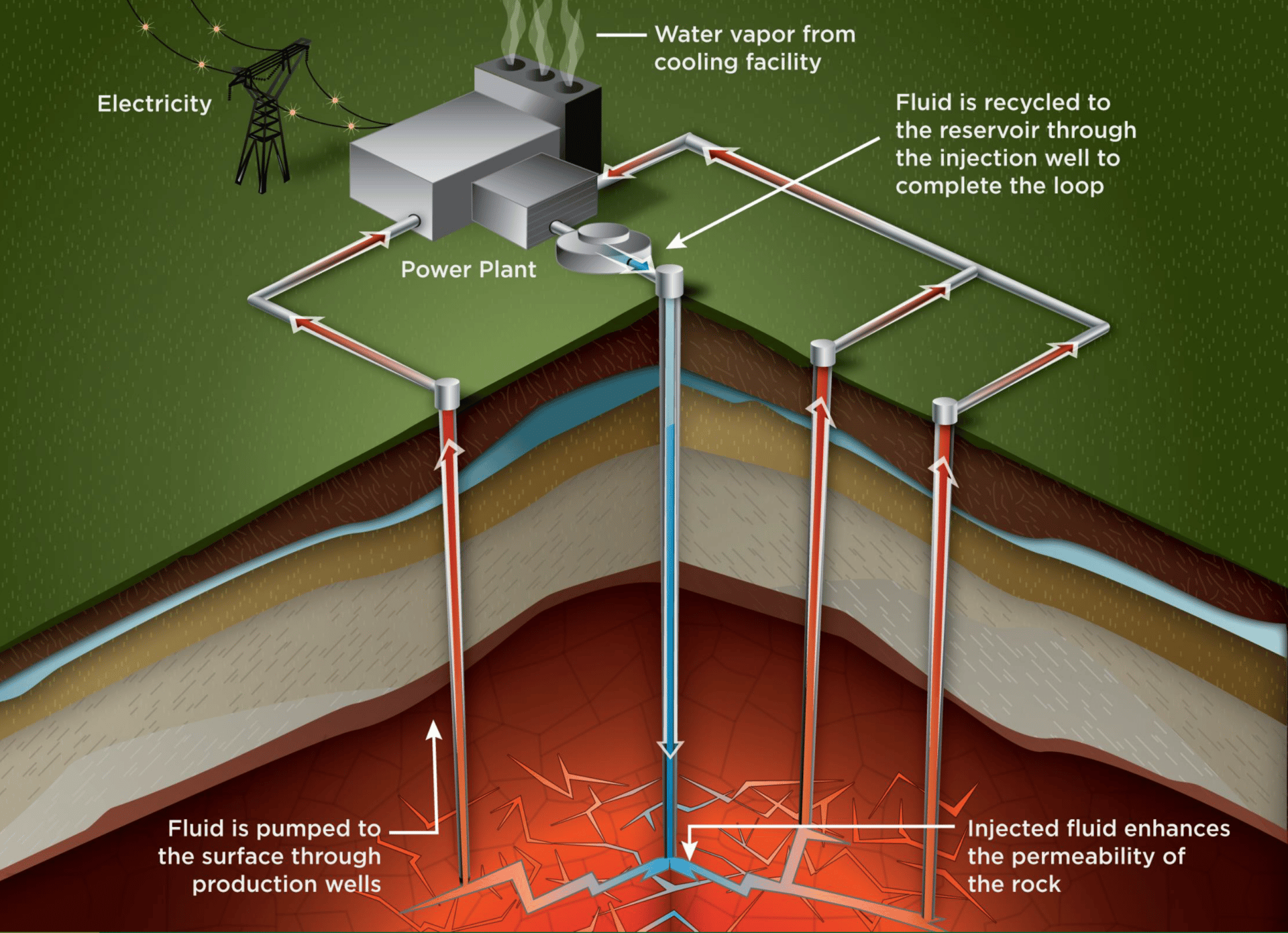
Many experts believe the future of geothermal energy lies in enhanced geothermal systems, which lack some of the natural characteristics needed to produce electricity from the Earth’s heat but may be used as geothermal energy sources with the right human interventions. Proper development of enhanced systems would drastically expand the potential for geothermal energy’s role in the US energy system.
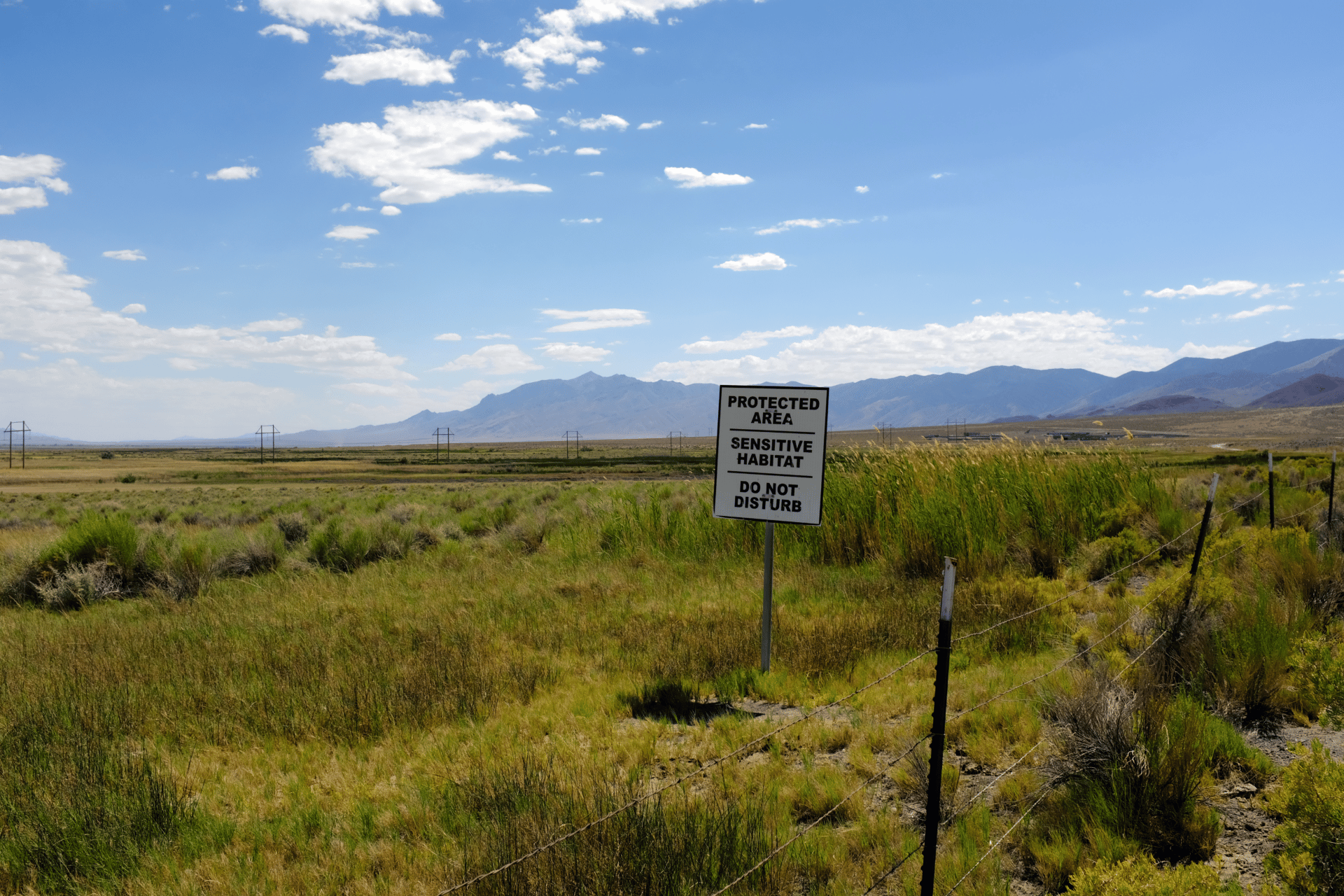
A sign in Dixie Meadows, with construction of the Dixie Meadows geothermal project visible in the right middle ground. Also visible is the highest point in the Stillwater Range, Job Peak, known as Fox Peak to the Fallon Paiute-Shoshone Tribe. Fox Peak is a sacred site, and the origin of humanity according to the tribe’s creation stories. (Jessica McKenzie)
Construction of the Dixie Meadows geothermal project is paused once again. Even after the 9th US Circuit Court of Appeals declined to reinstate the January injunction, Ormat voluntarily agreed in August to temporarily suspend construction until Fish and Wildlife Service issues a biological opinion regarding the threat to the Dixie Valley toad, or until the end of the year, whichever comes first. This saga is far from over.
There’s a phrase repeated often in renewable energy circles, and geothermal is no different: There’s no such thing as a free lunch. All electricity generation comes at a cost—the trick is getting the cost-benefit analysis right.
On one hand, there’s the Dixie Valley toad, which lives only in one place in the world and whose continued existence is threatened by the plants. There are also the claims of the Fallon Paiute-Shoshone Tribe. Chairwoman Catherine Williams-Tuni is intimately familiar with the noise from the Stillwater geothermal plant located near the reservation. “You’ll hear it running, and you hear the turbines going,” she tells me when we meet in her office. “I can’t imagine where that plant [Dixie Meadows] is now to where our springs are. How are we going to sit there in the serene beauty? And again, will that scare off the toads?”
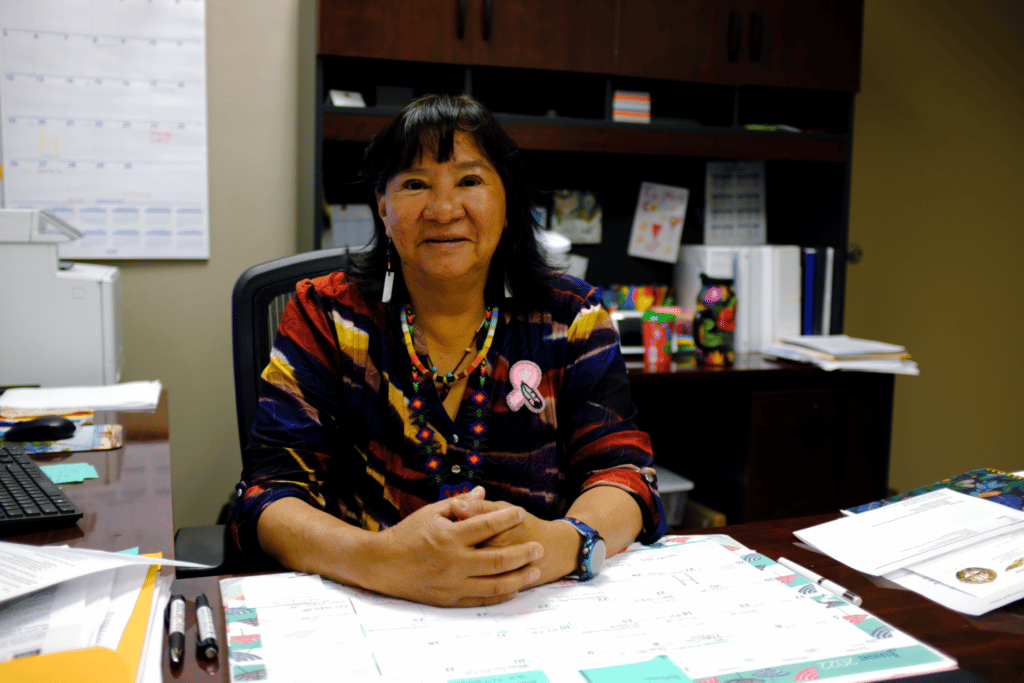
On the other hand, Ormat could lose $30 million in revenue over 20 years if the project is not completed by the end of the year—which looks increasingly likely—in addition to the $68 million the company says it has already sunk into the site.
Finally, there are the 12 megawatts of low-carbon energy at stake during an escalating climate crisis that requires urgent decarbonization. (Although the sticker capacity of the Dixie Meadows project is 60 megawatts, Ormat only has immediate plans to build one 12-megawatt plant. As such, they have asked the Bureau of Land Management to amend the project parameters to reflect this more modest plan, and hopefully alleviate concerns that multiple plants would have a greater impact on the hot springs.)
I ask Donnelly about the existential threat the climate crisis poses to biodiversity, which geothermal could play a role in alleviating. “If this was the only place on Earth to produce geothermal energy, that would be an argument to make,” he responds.
He adds that the Center for Biological Diversity does not oppose all geothermal. “There’s geothermal energy all over,” he says. “There’s probably springs that are going to dry up from it. We prioritize certain springs. Not every spring has an endangered toad.”
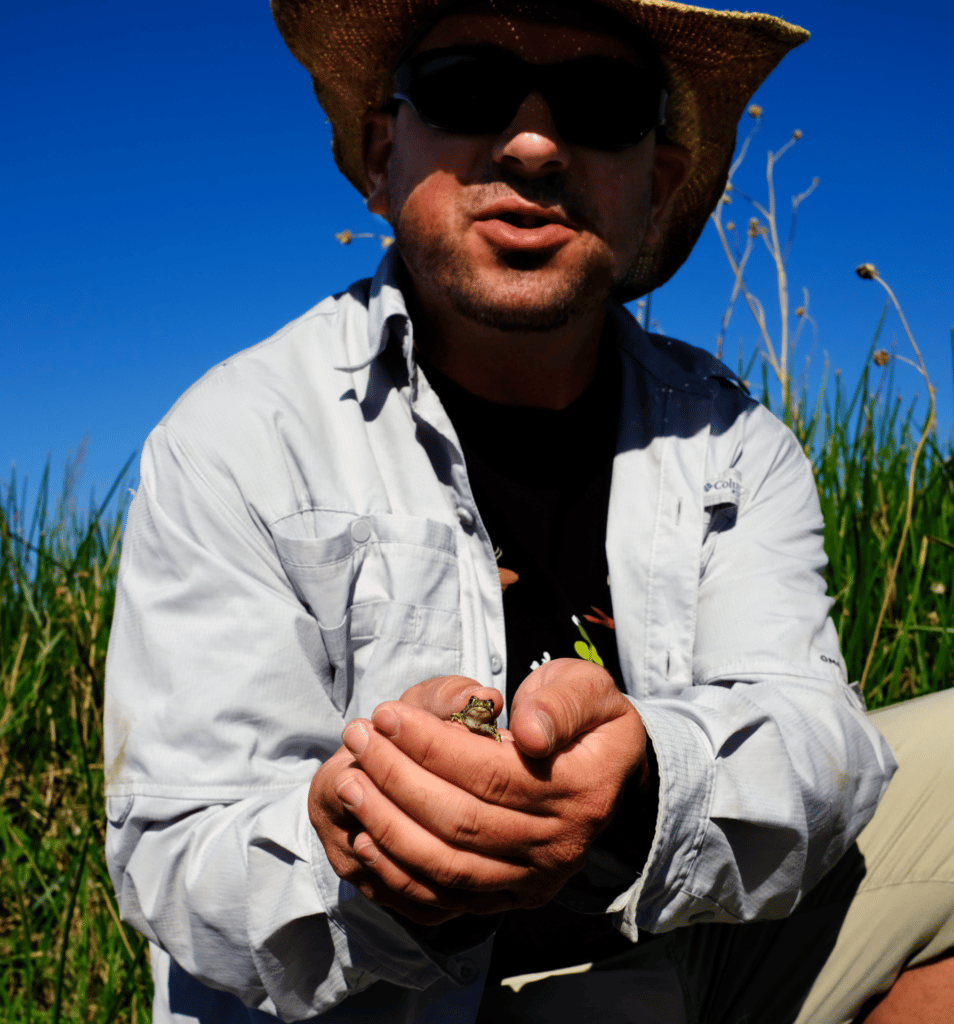
While the future of the Dixie Meadows geothermal project does, in fact, hinge on this little creature, the same cannot be said of geothermal energy as a whole, which has much bigger technological and regulatory challenges to vanquish. Exploration of the Dixie Meadows site began a decade before the Dixie Valley toad was even recognized as a distinct species. It’s not as though the project should have been pushed through so fast that threats to the toad were overlooked, but should renewable energy projects take over 15 years to explore, permit, and construct amid a climate crisis?
Threatening species with extinction isn’t the best way to win hearts and minds over to geothermal energy. The geothermal industry could start investing more in finding and exploiting hidden geothermal resources to avoid these complications.
In the meantime, Donnelly won’t stop protesting geothermal plants that put biodiversity at risk. In August, the Center for Biological Diversity petitioned to designate the bleached sandhill skipper, a rare butterfly that only lives near the Baltazor Hot Spring, across the road from another geothermal site proposed by Ormat, as an endangered species.
“Geothermal energy is an important part of our clean energy transition,” Donnelly writes in a forwarded press release. “But it can’t come at the cost of extinction.”
As the Russian invasion of Ukraine shows, nuclear threats are real, present, and dangerous
The Bulletin elevates expert voices above the noise. But as an independent, nonprofit media organization, our operations depend on the support of readers like you. Help us continue to deliver quality journalism that holds leaders accountable. Your support of our work at any level is important. In return, we promise our coverage will be understandable, influential, vigilant, solution-oriented, and fair-minded. Together we can make a difference.
Share: [addthis tool="addthis_inline_share_toolbox"]








Great article. Donnelly has a good point in that not every geothermal site has this peculiar situation with little critters. Is this article addressing problems with wells that are of the 1-2 mile variety? .In all fairness to geothermal the technology is in a state of hopefully rapid progress. . MIT has invented a 10 mile deep drill. A startup called Quaise is now developinig further. The steam is supercritical which makes this a game changer. You can read the detais on Bloomberg but in my opinion there are more than enough safe places to harness geothermal. Geothermal is still… Read more »
Great article. I’d say geothermal is basically a niche technology, but if its U.S. potential could be as high as 15% of energy demand, that isn’t chickenfeed. Article is well balanced and extremely interesting in detail. I shall assign it in my climate & energy classes at NYU.